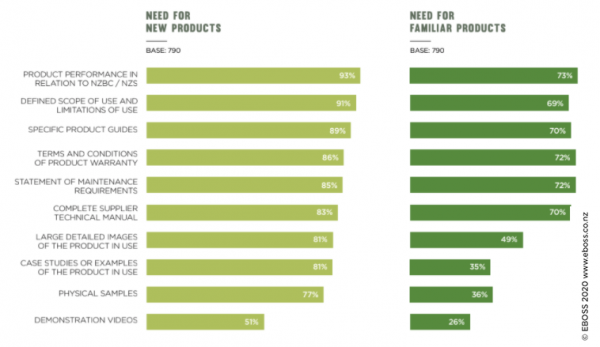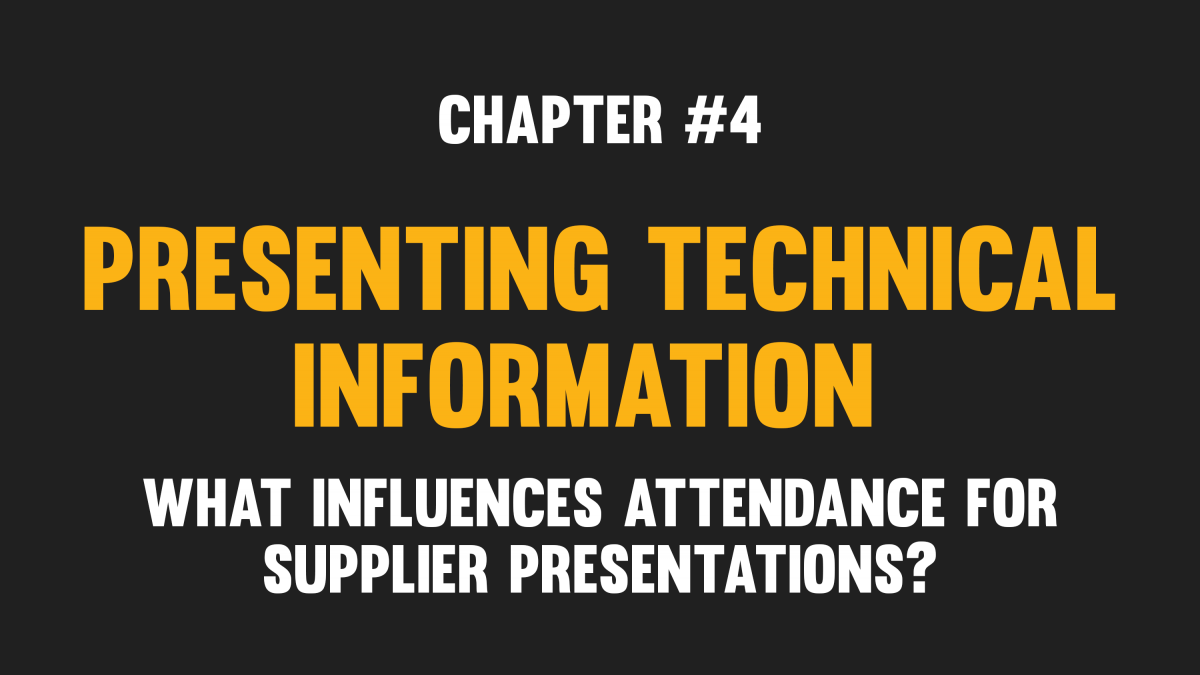How can you drive greater attendance and engagement with in-practice technical presentations? What technical documentation do architects need when specifying products?
In this fourth video of the series, Matthew Duder, EBOSS, helps answer these questions using key data from our Specifier Insights 2020 research — a study of the behaviour and preferences of 843 architectural practitioners. This video was originally part of a bonus session of our Specified 2020 annual conference.
Keep technical presentations relevant and focussed
Relevance is the key to increasing attendance and engagement in technical presentations.
In 2020, just like in 2018, the top 3 factors that influence attendance are:
- The topic being of interest
- The topic relating to a current project
- The topic relating to a recent building code change

Unsurprisingly, these three factors are also those most likely to encourage engagement — architects will have questions and be keen to engage when it comes to code changes, current projects and their areas of interest.
How can you ensure your presentation is effective?
When creating technical presentations, prioritise technical information over sales. The majority of specifiers are not interested in attending general product updates, so make sure your presentations are focussed on particular topics to maximise interest.
And to ensure you get a warm audience, do your research. It’s easy to find information on the projects practices are working on online. Use that to double-check that your presentation is relevant and tailored to each practice you visit.
What technical information do architects need?
The top four types of information needed have remained consistent between 2018 and 2020:
- Product performance in relation to NZBC / NZS
- Defined scope of use and limitations of use
- Specific product guides
- Terms and conditions of product warranty

Product performance in relation to NZBC / NZS remains the most important type of information for both new and existing products, so it’s critical to have this ready from the moment a product is launched. We recommend taking a system approach to this to demonstrate how your product relates to the entire performance of the system. If you are providing a product in isolation, it’s important to be clear about the specific performance clauses of the NZBC that the product is designed to meet.
Further down the list, there are key differences in what is needed for a new vs. familiar product, with specifiers relying more on large in-situ images, case studies and physical samples for products they are unfamiliar with.
Different specifiers have different needs
The information required also varies a little depending on profession. In particular, registered architects say they need product performance documentation in relation to the NZBC (98%), while architectural graduates are more likely to rely on complete supplier technical manuals. While these differences are minor, it’s useful knowledge for reps who may require different resources for architectural graduates vs senior architects.
Ideally, product suppliers will have all of the documentation types readily available online, with reps available to offer further support.
In our next blog post of the series, we will look at the level of trust architects and builders have in different certification systems.
Copyright © EBOSS 2020
Request the Specifier Insights 2020 Report
Enter your details to request a hard copy of the full 2020 Specifier Insights Report.
























